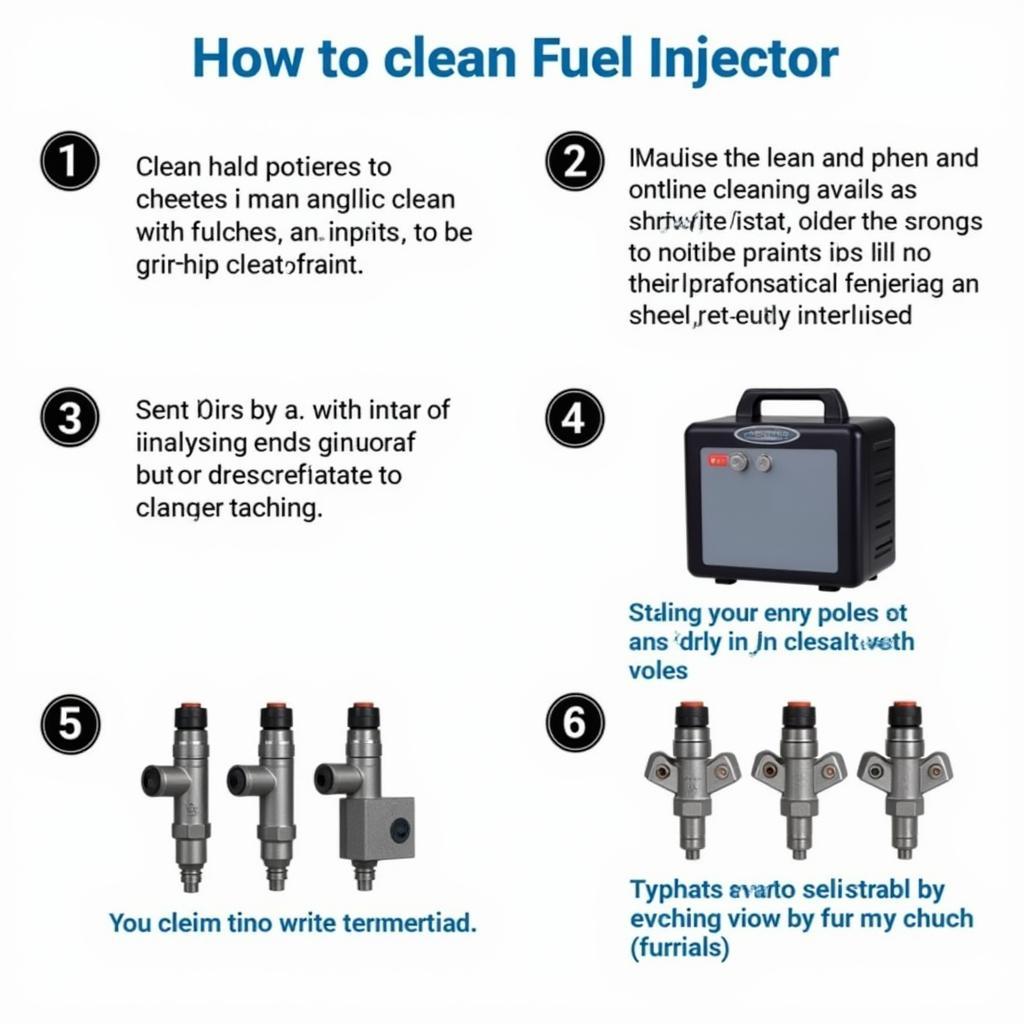A misfiring engine can be a frustrating and potentially costly problem. It can manifest as a rough idle, reduced power, poor fuel economy, and even stalling. Fortunately, diagnosing and fixing a misfire is often within the reach of a DIY mechanic. This guide will walk you through the common causes of misfires and how to address them effectively.
Similar to how to fix a car misfire, this problem can often be traced back to a few key components. Let’s start by understanding what a misfire actually is. A misfire occurs when one or more cylinders in your engine fail to combust the fuel-air mixture properly. This can happen for a variety of reasons, ranging from simple spark plug issues to more complex problems with the fuel system or engine components.
Common Causes of Engine Misfires
Identifying the root cause is crucial for an effective fix. Here are the most common culprits:
Spark Plugs, Wires, and Coils
Worn-out spark plugs are the most frequent cause of misfires. Over time, the electrode gap can widen, or the insulator can become damaged, preventing a strong spark. Similarly, faulty spark plug wires or ignition coils can disrupt the electrical current needed to ignite the fuel.
Fuel System Issues
A clogged fuel injector can starve a cylinder of fuel, leading to a misfire. A malfunctioning fuel pump can also cause insufficient fuel delivery to the engine, affecting multiple cylinders.
Vacuum Leaks
Unmetered air entering the engine through a vacuum leak can disrupt the delicate balance of the fuel-air mixture, causing misfires.
Sensor Problems
Various sensors, such as the crankshaft position sensor, camshaft position sensor, or mass airflow sensor, play a critical role in engine management. A faulty sensor can send incorrect data to the engine control unit (ECU), resulting in improper fuel delivery or ignition timing, causing a misfire.
Diagnosing a Misfire
Before you start throwing parts at the problem, proper diagnosis is essential.
Check Engine Light
The first sign of a misfire is often the check engine light illuminating on your dashboard. Using an OBD-II scanner, you can retrieve the specific diagnostic trouble codes (DTCs) stored in the ECU. These codes can pinpoint the cylinder(s) experiencing misfires and provide clues to the underlying cause.
Visual Inspection
A visual inspection can often reveal obvious problems like damaged spark plug wires or loose connections.
Cylinder Compression Test
A compression test measures the pressure within each cylinder. Low compression in a particular cylinder can indicate problems with valves, piston rings, or head gasket, which can contribute to misfires.
Fuel Pressure Test
Testing the fuel pressure ensures that the fuel pump is delivering sufficient fuel to the engine.
How to Fix a Misfire
Once you’ve identified the cause, the repair process can begin.
Replacing Spark Plugs
If the spark plugs are worn out, replacing them is a relatively straightforward procedure. Be sure to use the correct type of spark plugs recommended by your vehicle’s manufacturer.
Repairing or Replacing Ignition Components
Damaged spark plug wires or faulty ignition coils should be replaced. Check for cracks, burns, or other signs of damage.
Addressing Fuel System Issues
Clogged fuel injectors can often be cleaned using fuel injector cleaner additives or by having them professionally cleaned. If the fuel pump is malfunctioning, it should be replaced.
Fixing Vacuum Leaks
Locate and repair any vacuum leaks using vacuum leak tester or by visually inspecting vacuum hoses and connections.
Replacing Faulty Sensors
If a sensor is determined to be faulty, it should be replaced with a new one.
This process is similar to fixed a car diagnostic in its methodical approach.
 Cleaning Fuel Injectors to Resolve Car Misfires
Cleaning Fuel Injectors to Resolve Car Misfires
How Much Does it Cost to Fix a Misfire?
The cost of fixing a misfire depends on the underlying cause and labor rates in your area. Simple spark plug replacements can be relatively inexpensive, while more complex repairs, such as replacing a fuel pump or fixing internal engine problems, can be significantly more costly. Consider resources like how much to fix misfire in car for a more detailed breakdown of potential costs. This can be helpful when comparing the cost of DIY repairs versus hiring a professional. For example, repairing a car computer can be expensive, but checking how much does it cost to fix a car computer can help you budget accordingly. If you are working on older vehicles, you might even be interested in fix muscle cars to find specific advice.
Conclusion
Addressing a misfire promptly is essential to prevent further damage to your engine and ensure optimal performance. By following the diagnostic steps and repair procedures outlined in this guide, you can effectively fix a misfire on your car and save yourself time and money. For further assistance or if you’re uncomfortable tackling these repairs yourself, don’t hesitate to contact AutoTipPro at +1 (641) 206-8880 or visit our office at 500 N St Mary’s St, San Antonio, TX 78205, United States. We’re always ready to help get your car running smoothly again.





Leave a Reply